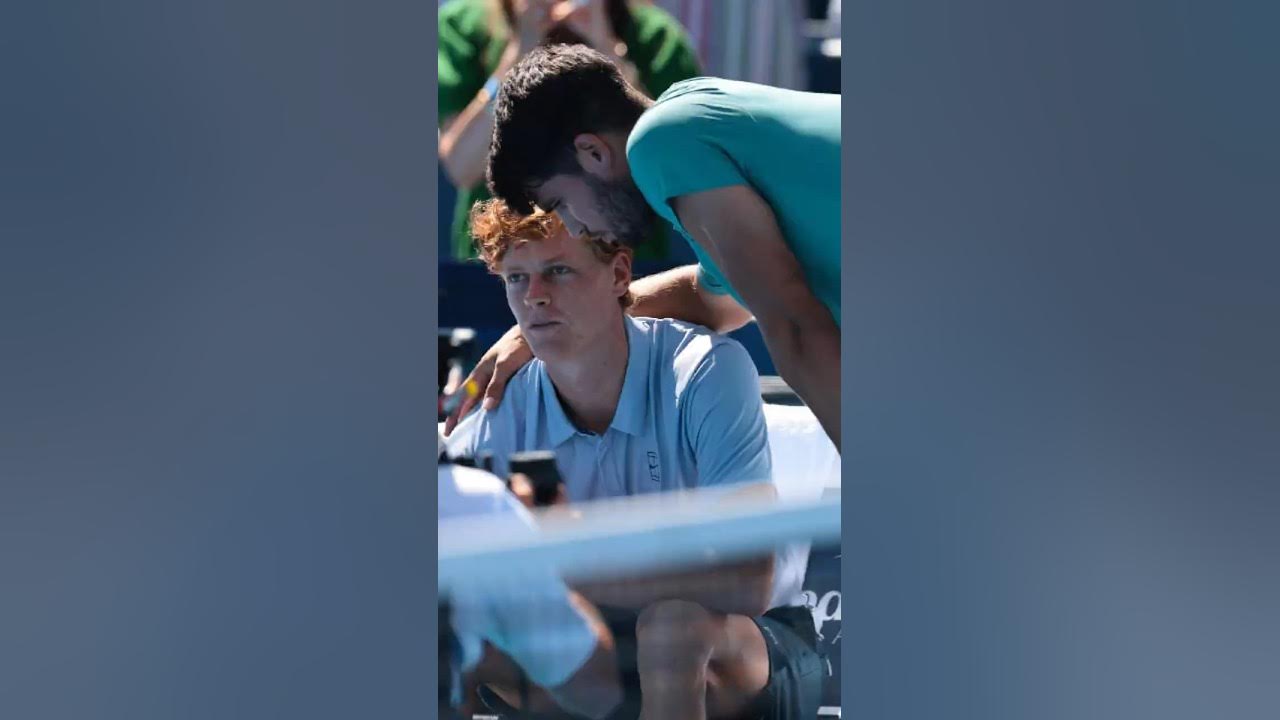The Western & Southern Open in Cincinnati, a pivotal stop on the road to the US Open, was poised for a grand finale. The highly anticipated clash between rising star Jannik Sinner and his formidable rival Carlos Alcaraz promised a spectacle of elite tennis. Yet, what transpired on court was a stark, sobering reminder of the very human limitations that even the most finely tuned athletic machines face. Just 23 minutes into the match, with a surprising 5-0 deficit, Sinner made the difficult and abrupt decision to retire, sending a ripple of concern and immediate questions through the tennis world.
A Visible Struggle: The On-Court Indications
From the first ball, it was evident that this was not the Jannik Sinner fans had come to admire. His typically vibrant on-court presence was replaced by a pallid complexion, movements that lacked their usual spring, and a noticeable absence of his characteristic reactivity. His formidable forehand, usually a weapon, appeared to misfire under duress. The physical cues were undeniable, culminating in a hushed but firm declaration to the ATP medical staff: “I`m too sick, I can`t move.” Sinner himself later confirmed that he had been feeling unwell since the day prior, holding onto a dwindling hope that a night`s rest would bring improvement. Regrettably, his condition had only worsened.

Investigating the Cause: Beyond the Obvious
In the high-stakes world of professional sports, an unexpected retirement invariably sparks a flurry of speculation. Was it a nagging injury finally giving way? A sudden onset of food poisoning? Reports from Sinner’s camp swiftly ruled out a mechanical injury, which often leaves visible signs or a clear point of discomfort. Similarly, acute food poisoning seemed unlikely given the sustained onset of symptoms. The prevailing hypothesis, endorsed by the observations and Sinner’s own comments, points to a viral infection. He appeared profoundly depleted of energy, as if an unwelcome, unseen opponent had infiltrated his system, rendering him unable to compete at the required intensity.
The Cincinnati Crucible: Heat, Humidity, and the Extended Calendar`s Toll
While a viral culprit is currently the leading theory, it`s crucial to acknowledge the unique environmental factors at play in Cincinnati. Sinner himself candidly described the tournament as “one of the hottest we`ve played, perhaps the hottest ever.” The relentless combination of extreme heat and oppressive humidity can push even the most meticulously conditioned athletes to their absolute physiological limits. These conditions amplify dehydration and heat stress, turning every point into an endurance test.
Adding another layer of complexity are the architectural realities of modern tennis venues. Players frequently transition between the cool, air-conditioned sanctity of player lounges and locker rooms, and the sweltering, humid intensity of the outdoor courts. Such stark and repeated temperature fluctuations can place immense stress on the body`s thermoregulation system, making athletes more vulnerable to illness. Furthermore, Cincinnati`s recent expansion to a 12-day tournament, offering an extended stay for players, might have unintentionally facilitated the spread of pathogens. More time spent in close proximity among a large international cohort of athletes, particularly under physically stressful conditions, inherently increases the likelihood of viral transmission. Indeed, Sinner`s withdrawal was not an isolated incident; the tournament saw a noticeable number of illnesses and retirements, hinting at a broader environmental or infectious challenge within the player community.

Beyond the Court: The Unseen Demands of the Tour
“Professional tennis players, despite their incredible athleticism, are not impervious machines. The ceaseless grind of the ATP tour, with its demanding travel schedule, varied climates, and high-stakes competition, places an extraordinary burden on their physical and mental resilience.”
This incident serves as a poignant reminder that professional tennis players, despite their incredible athleticism, are not impervious machines. The ceaseless grind of the ATP tour, with its demanding travel schedule, varied climates, and high-stakes competition, places an extraordinary burden on their physical and mental resilience. One might even muse that the only truly predictable element of a top player`s schedule is its inherent unpredictability—whether due to an opponent`s unforeseen brilliance, or, as in this case, the more insidious and humbling threats of a microscopic invader or Mother Nature`s relentless embrace.
Sinner has since traveled to New York, where he will undergo a period of absolute rest and further medical evaluation. He has withdrawn from any immediate commitments, including the previously planned mixed doubles, allowing his body the crucial time it needs to recover fully. The immediate focus now shifts entirely to ensuring his complete recovery ahead of the next major challenge: the US Open. This meticulous care underscores the continuous, behind-the-scenes battle required to maintain peak performance in a sport that offers little quarter and constantly tests the limits of human endurance.

